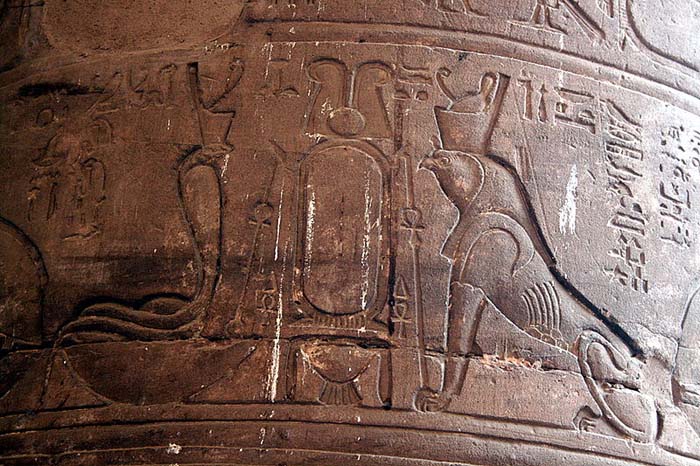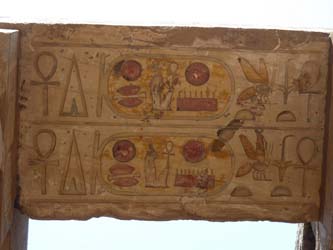The names of the Egyptian pharaohs
typically had five names, one which was bestowed upon them at birth and another four names that were not given until they took the throne. The final four names were bestowed upon the king to officially commemorate his transformation from a mortal to a deity.
The birth name of the pharaoh seems to have remained very prominent in the pharaoh’s life. It was the birth name that was primarily used in the cartouche and the name by which the pharaoh was most commonly known.
 © Hedwig Storch – Cartouche at Edfu
© Hedwig Storch – Cartouche at Edfu
Cartouche hieroglyphics were not introduced into Egyptian society until the Fourth Dynasty, when they were instituted by King Snefru. The Egyptians did not refer to these ancient Egyptian hieroglyphics as cartouche, this name was given to the royal nameplates by Napoleon’s soldiers. Instead, the Egyptians called the oblong plaque shenu.
Prior to the introduction of the cartouche, the serekh was used to signify Egyptian royalty. The serekh was used from the earliest dates of the Egyptian kingdoms and almost always ancient Egyptian symbols referencing the god Horus, who was thought to be the protector of the king, his palace and all its inhabitants.

© Hannah Pethen – Throne Name of Seti I








































